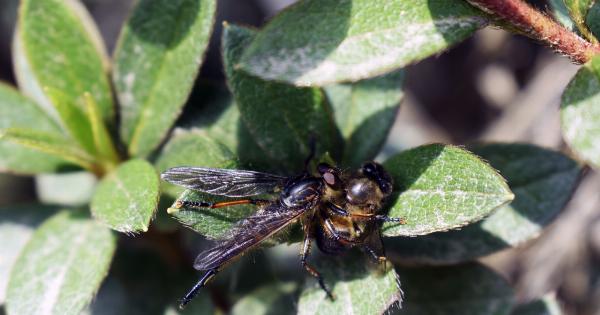When you think of insects, your mind may instantly conjure up images of creepy, crawly creatures that we try to avoid at all costs.
However, what if we told you that we actually eat a significant amount of insects every year without even realizing it? That’s right, according to recent studies, we consume an average of 500 grams of insects annually – and you may be surprised to find out where they’re hiding.
Where Do Insects Hide?
Insects can be found in a wide variety of foods – from fruits and vegetables to processed snacks. One of the most common sources of insect consumption is through the use of food additives.
Many food manufacturers use insect-derived ingredients to add flavor or color to their products, without any mention of the fact that they contain insects.
In fact, cochineal extract – a bright red dye made from crushed cochineal insects – is a popular food coloring used in a range of products such as yogurt, candy, and even some wines.
It’s estimated that the average person consumes around 70,000 cochineal insects a year without even realizing it!.
The Nutritional Value of Insects
While it may be surprising to hear that we eat insects unknowingly, it’s important to note that they actually have a range of nutritional benefits that often go unrecognized.
Insects are high in protein and contain important amino acids that are essential to our diets. They’re also low in fat and can provide a valuable source of energy without the added calories.
In fact, many cultures around the world have been eating insects for centuries and consider them to be a delicacy. Insects such as crickets, mealworms, and grasshoppers are often eaten roasted, fried, or ground into flour to make bread or pasta.
They’re packed with essential nutrients and are a sustainable and ethical source of food.
The Health Risks of Consuming Insects
While insects may provide a range of health benefits, there are also some potential health risks associated with their consumption. One of the main concerns is the possibility of an allergic reaction.
For individuals with a shellfish allergy, there is a higher risk of also being allergic to insects, as they contain similar proteins.
Another risk is the potential for contamination. Insects can carry harmful bacteria such as E. coli or salmonella, which can cause food poisoning. However, it’s important to note that with proper preparation and cooking, these risks can be minimized.
The Future of Insect Consumption
As our global population continues to grow, finding sustainable and ethical sources of food is becoming an increasingly important issue.
Insects are a highly efficient and eco-friendly source of protein that could play a significant role in global food security.
The United Nations has even identified insects as a potential solution to world hunger and has encouraged the development of insect farming and production.
This means that we may see insects becoming a more common ingredient in our foods in the future, whether we realize it or not.
Conclusion
The truth is that we eat a significant amount of insects every year without even realizing it.
While this may be surprising, insects actually provide a range of nutritional benefits and have the potential to be a sustainable and ethical source of food in the future.
However, it’s important to be aware of the potential health risks associated with consuming insects and to ensure that they’re prepared and cooked properly.
As we continue to explore new sources of food, it’s clear that insects will continue to play an important role in our diets – whether we like it or not!.






























